Hashemite Monarchs of Jordan
The Hashemites have ruled in Jordan since 1921 after the Great Arab Revolt, the lineage has proceeded as follows:
The 41st-generation direct descendant of the Prophet Mohammad (peace be upon him), His Majesty King Abdullah II assumed his constitutional powers on 7 February 1999.
Following in the footsteps of his father, the late King Hussein, King Abdullah II has made the welfare of Jordan’s people the cornerstone of his policies for national development, regional peace, and global coexistence. The King’s special concern for the future of Jordan’s young people has put youth engagement, education, and opportunity at the top of his agenda. At home, he has paired economic reforms with political liberalization and an innovative program of national development. He has overseen sweeping educational reforms, which today are energizing Jordan's private sector and preparing Jordan's youth for global competitiveness and leadership.
His Majesty King Abdullah II ibn Al Hussein married Queen Rania on June 10th, 1993. Their Majesties have two sons, Crown Prince Al Hussein, born on June 28th, 1994, and Prince Hashem, born on January 30th, 2005 and two daughters, Princess Iman, born on September 27th, 1996, and Princess Salma, born on September 26th, 2000.
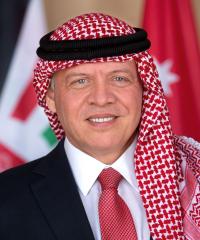
His Majesty King Hussein bin Talal, the father of modern Jordan, is remembered as a leader who guided his country through strife and turmoil to become an oasis of peace, stability and moderation in the Middle East. Among Jordanians, his memory is cherished as the inspiration for Jordan's climate of openness, tolerance and compassion.
Throughout his 47-year reign, King Hussein worked hard at building his country and raising the living standard of each and every Jordanian. Early on, King Hussein concentrated on building an economic and industrial infrastructure that would complement and enhance the advances he wanted to achieve in the quality of life of his people.
King Hussein was able to achieve the highest levels of development — especially in the political, economic and social fields. He became the builder of a moderate Jordan and succeeded in securing a decent life for his people. Under his leadership, Jordan continued to play its Arab, regional and international role ably and effectively, with keen prescience.
At the time of his passing on February 7, 1999, His Majesty was the longest serving executive head of state in the world.
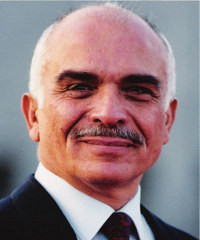
After King Abdullah’s martyrdom, King Talal, his eldest son, reigned for a brief period. Due to King Talal’s illness, his eldest son, Hussein, was proclaimed King of the Hashemite Kingdom of Jordan on August 11, 1952.
Although King Talal’s reign was short, he completed the 1952 Jordanian Constitution, which was based on engaging the people in decision-making in conformity with national unity. During his reign, the right to free education was endorsed and many laws were passed. King Talal also sought to improve Jordan’s relations with Arab states.
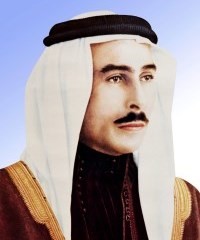
The Emirate of Transjordan was founded on April 11, 1921, and became the Hashemite Kingdom of Jordan upon formal independence from Britain in 1946. During his thirty-year reign, King Abdullah presided over the forging of a viable and durable state. He developed the institutional foundations of modern Jordan, promulgating Jordan’s first Organic Law in 1928 (the basis for today’s Constitution), and holding elections for its first assembly in 1929. While guiding Jordan’s development into a modern state, King Abdullah negotiated a series of treaties with Britain which earned increasing freedom for Jordan. King Abdullah achieved full independence from Britain on May 25, 1946.
After successfully defending Arab East Jerusalem and the “West Bank” during the 1948 Arab-Israeli War, King Abdullah regularly travelled to Al-Aqsa Mosque in Jerusalem to participate in the Friday prayers. On July 20, 1951, King Abdullah was assassinated by a lone gunman while attending the Friday prayers there with his grandson Hussein, who was saved from a bullet by a medal his grandfather had recently awarded him.
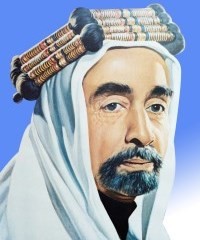
During the Great Arab Revolt of 1916, King Abdullah’s great-great-grandfather, Al-Hussein bin Ali, Sharif of Mecca, led the liberation of Arab lands from the Ottoman Turks.
After freeing the lands of Jordan, Lebanon, Palestine, Iraq, Syria and the Hijaz, Sharif Hussein’s son Abdullah assumed the throne of Transjordan and his second son Faisal assumed the throne of Syria and later Iraq.
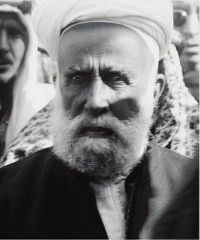
42nd Descendant of the Prophet (PBUH)
His Royal Highness Crown Prince Al Hussein bin Abdullah II is the 42nd-generation direct descendant of Prophet Mohammad (peace be upon him). His Royal Highness is the eldest son of Their Majesties King Abdullah II and Queen Rania Al Abdullah.
The Hashemite family tree of HRH Crown Prince Al Hussein bin Abdullah II shows the lineage from the Arab chieftain of Quraysh, a descendant of the Prophet Ismail, himself the son of the Prophet Ibrahim (Abraham).
The Hashemites, or “Bani Hashem,” are direct descendants of Prophet Mohammad, peace be upon him. The family represents over 1,000 years of rule in the Middle East and nearly 2,000 years of recorded presence in the holy city of Mecca. The Hashemites have a long-standing history as guardians of the Islamic faith and the holy city of Jerusalem.
Today, the Jordanian Hashemites are widely regarded as a moderate and modernizing force in the Middle East, playing a critical role in promoting stability, development, and humanitarianism in the region.
